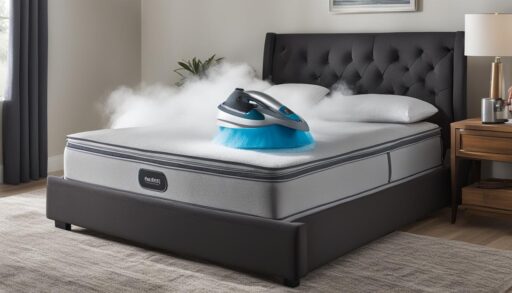Bedroom Soundproofing
Children’s bedtime routines can benefit greatly from bedroom soundproofing, which transforms restless nights into restful slumber. Whether it’s traffic noise, loud neighbors, or snoring, creating a quieter sleep space is easier—and more affordable—than you think.

Key Takeaways
- Soundproofing physically blocks noise, unlike masking which only hides it.
- Wall panels, rugs, curtains, and furniture placement all contribute to a quieter room.
- Small upgrades like weatherstripping can reduce noise by up to 15 decibels.
- White noise is helpful but works best when paired with actual soundproofing materials.
- Professional consultations offer advanced solutions for high-noise areas.
Why Bedroom Soundproofing Matters
Nightstand ideas for quiet bedrooms are just the beginning. Moderate ambient noise can disrupt REM sleep, affecting memory, mood, and wellness. Physical soundproofing creates long-term tranquility for deeper rest.
Soundproofing vs. Noise Masking: Know the Difference
Five-star bedroom tips often include noise management. Soundproofing blocks or absorbs noise at the source, while masking simply overlays it. True quiet comes from physical changes to your space.
Best Bedroom Soundproofing Solutions
1. Install Acoustic Panels
Sleep sound solutions include acoustic panels that absorb soundwaves and reduce echoes. Foam or fabric panels can be mounted on walls or ceilings for fast results.
For best results, place panels on walls adjacent to noise sources—like shared walls or near windows. Positioning behind your bed can also enhance both silence and design.

2. Seal Doors and Windows
Unique headboard designs can help, but sealing windows and doors prevents leaks where sound gets in. Use weatherstripping or acoustic caulk for noticeable improvements.
3. Use Heavy Curtains and Drapes
Cozy bedding sets aren’t just about comfort—they enhance acoustics when paired with soundproof curtains. Dense fabric helps block external sound and regulate temperature.
Opt for floor-to-ceiling blackout curtains with a high GSM (fabric weight) for best results, and consider layering with thermal liners.
4. Upgrade Your Flooring with Rugs or Carpets
Soundproof drywall effectiveness complements rug upgrades. Layering thick rugs or carpets on hard floors reduces echo, muffles footsteps, and adds insulation.

5. Try Soundproofing Blankets
DIY soundproofing guide sources recommend blankets for quick sound dampening. Hang them on walls or over doors for a renter-friendly fix.
Use dense moving blankets or specially designed acoustic blankets. They’re most effective when covering 80–100% of a wall surface.
6. Rearrange Your Furniture
Design-minded sound-dampening hacks show how furniture can buffer noise. Place dressers, padded headboards, or bookshelves along walls shared with neighbors to reduce sound transfer.
7. Use Double-Pane or Soundproof Windows
Double-pane windows trap sound between glass layers. For older homes, try magnetic inserts or window quilts for a similar barrier effect.
Renters can benefit from removable acrylic window inserts or heavy window sealing kits, which help block drafts and street sounds affordably.
8. Add Insulated Drywall or Mass-Loaded Vinyl
In noisy apartments or remodels, insulated drywall or vinyl sheets create soundproof layers inside walls. This option works well for long-term solutions.
These solutions often require professional installation or advanced DIY skills and come with a higher upfront cost—but deliver permanent noise reduction.
9. Combine Soundproofing with White Noise
White noise machines won’t block noise, but they can help mask it. The best approach is to pair them with real soundproofing materials.
Professional Soundproofing Help
When basic methods fall short, acoustic consultants can assess your space. They offer tailored fixes like wall decoupling, resilient channels, or floating floors.
Bedroom soundproofing is more than a luxury—it’s a sleep investment. With smart tweaks and thoughtful upgrades, your bedroom can become a quiet, healing sanctuary.
FAQ
What’s the cheapest way to soundproof a bedroom?
Use thick rugs, weatherstripping, and heavy curtains. These budget-friendly steps make a noticeable difference in reducing daily noise.
Can I soundproof my room without remodeling?
Yes—soundproofing blankets, rugs, and furniture placement are effective DIY strategies that don’t require construction or permanent changes.
Do white noise machines work for soundproofing?
They mask sound but don’t block it. White noise helps with consistency but should be combined with real soundproofing materials.
Where should I place soundproofing materials?
Target walls facing noise, windows, and floors. Focus on gaps, shared surfaces, and thin partitions for maximum impact.








